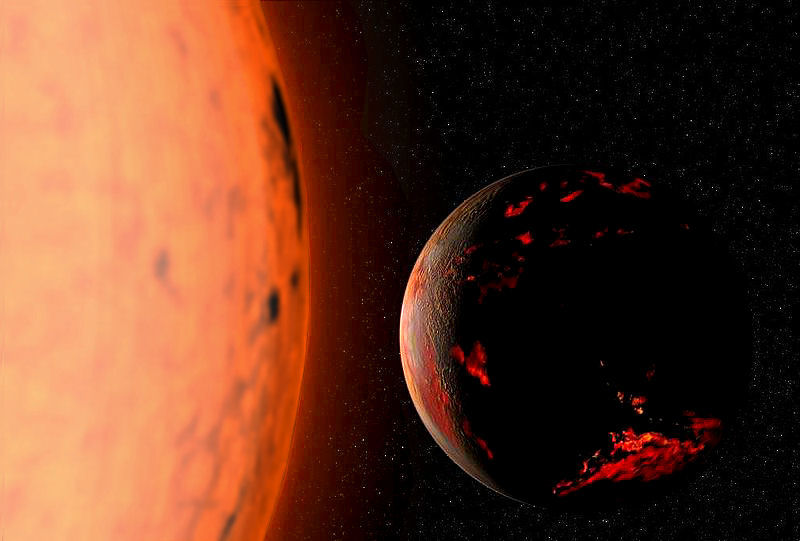WC: Radio Telescope Control Room, Jodrell Bank, UK What are we looking for. A world and civilisation that can guide us into the future. Ensure that our mistakes are no longer repeated. A civilisation beyond capitalism, namely a planned non-monetary economy creating an egalitarian world, would be based upon a science culture, investigating all branches of science, not just space research, which is elaborated here. Why a science based society? Well, when it comes to just handling information in an office job, or assembling components on a production line, or maintenance of vehicles/buildings/landscape, AI and androids will soon be able to take over those tasks. Science requires intuition, self motivation, and access to newly acquired knowledge. That is why this chapter is important in promoting a technocracy here on Earth.
In maintenance, products will be modular, in order to facilitate replacement by androids. In animal agriculture, cultured meat will be produced in process plants where animal cells and feed stock grow in controlled conditions. The feed stock, an artificial flour, will be produced from protein derived from soil, added to carbon dioxide and hydrogen in vats. The hydrogen will be produced by the electrolysis of water. This feed stock will be cheaper to produce than soya, which employs millions of hectares of land to produce, and is then fed to farm animals around the world. Animal farming currently employs millions of people on our planet. For a similar output, factory farming will only employ a few thousand. Similarly, the use of fertilizers for the production of fruits and vegetables can be avoided by the use of organic farming. Namely the fertilizing of fields by employing deep rooted weeds, drawing up nutrients to the surface, they are then ploughed into the ground, after which crops are grown, supported by a feed consisting of wood chips. This would replace our existing fertilizer industry and its associated pollution of rivers and barrier reefs. What do we do with all the unemployed people created by these technologies and methods? They can't all lie on the beach in Benidorm, Spain like a colony of sea lions. People will require employment in order to give them a purpose in life. And they can't all sit there typing on their PC, bemoaning the state of the world. Fortunately there is a solution in scientific research. When it comes to science, vision and intuition are essential, which I assume AI will take many years to perfect. By which time science will have found the conscience gene in order to eliminate crime, made everyone impotent in order to eliminate global warming, or put us all in suspended animation, on a trip far far away.
This chapter is divided up into the following subjects:
There are three things that humans want to know more than anything else. Are there any more planets with intelligent life on them, and if so, where are they, and what is life like there. Only a world technocracy, with all of our planet's resources at its disposal, is probably capable of providing those answers.
SHUT: Milky Way galaxy...100 to 400 billion stars, 400 to 1600 billion exoplanets? As of January 2024 at least 5500 exoplanets have been discovered since the first in 1989, but probably none of them is like our planet, the Earth. The exoplanet closest in mass and temperature to Earth is LHS 1140-b, followed by Trappist-1e. Both are 40 lya (light years away) The exoplanet Trappis-1e receives 60 per cent of the starlight that Earth receives. Its ultra cool dwarf star is 3 to 8 billion years old. Old enough for life to have developed there were the conditions to be right, but also old enough for its magnetosphere to have failed and volatiles to have drifted off into space. If the planet is tidally locked to its star, then the hurricane force winds generated are unlikely to permit advanced life forms, assuming the temperatures are diverse enough. 3 of the 7 planets in this solar system are in the habitable zone. Should any advanced civilisation have formed in the distant past, it may well have decided to explore the universe rather than stay in a slowly dying solar system.
Another contending exoplanet comparable to Earth is Kepler 1649-c. It has 1.06 Earth mass and 75% Earth starlight. Next comes Kepler 186-f, Teegarden-c TOI 700-d and Proxima Centauri-b, the last two have stellar winds which would blow away their atmospheres. K2-18b has water in its atmosphere, plus hydrogen and helium, and is probably a gaseous exoplanet, being twice the mass of Earth, 110 lya. Kepler 186-f is the first Earth sized exoplanet found in the habitable zone. Because of its distance from Earth, 582 lya, it will not be possible to discern its atmospheric composition in the near future, including by JWST (James Webb Space Telescope). In January 2020, TOI 700-d, was discovered 101.4 light years away by NASA’s TESS (Transiting Exoplanet Survey Satellite). It orbits a red dwarf star. Exoplanets larger than 1.3 times the Earth's mass are considered gaseous, like Neptune. Because of light contrast problems, exoplanets currently can only be detected if they are very large, gas giants, or the star is a dim, red or brown dwarf.
In August 2021 the most similar exoplanet to Earth was announced. Kepler 452-b is 1400 lya, in the habitable zone of a G2 star like our Sun. Its orbital period is 385 days, but being larger than Earth its gravity is twice as great and therefore unlikely to support advanced life unless its a water world. Since its star is 1.5 billion years older than our Sun, it's likely that this planet's volatiles have out gassed into space long ago. It's therefore likely to be barren. Accurate data for the formulae in this chapter, will only be obtained when a telescope exists which can detect Moon sized objects, and their atmospheric bio-markers, orbiting G, K and ultra cool dwarf stars, out to a distance of at least 100 light years, and possibly 1000 light years. From gamma ray to radio, such giant telescopes will emerge from NASA's 'Made in Space' program, where radio dishes, etc. are constructed in space using 3D printing, or mass produced and then sent to the poles of the Moon.
In May 2013 it was announced that two of four reaction wheels on the space telescope Kepler had failed, thereby reducing its flow of data. Meanwhile the Kepler Space Observation Mission team estimate that there are 500 million exoplanets in the habitable zone (HZ), having detected 54 in the HZ, six of which are less than twice the size of Earth. However the number actually having multi-cellular life is likely to be extremely low. This section explains why.
In recent years we have witnessed the launch and operation of the NASA Kepler telescope launched 2009 and its French equivalent, Corot launched 2007, both of which are now dead. As I write, three planets are announced, by the University of Birmingham, in close orbit around the same star, Kepler 37-b, c and d, with 37-b only slightly larger than our Moon with an orbit of 13 days. Since 1992 when the first exoplanet was discovered orbiting a pulsar, research has shown that solar systems are anything but standard, in stark contradiction to the predictions of scientists. Elsewhere Kepler 22-b, 1200 lya, is thought to be a water world, Koi 701.04 has 3 planets Earth sized, whilst Gliese 667-c, a red dwarf 22 lya is thought to be the departure point of our Roswell visitors, and has 4 large Earths. 1 in 6 stars are thought to have Earth sized planets orbiting them, whilst there are even planets orbiting more than one star. Despite these findings it is unlikely that more than fifty Earth type planets will be discovered within our galaxy, with intelligent life, and here's why:
NASA: Red Dwarf Flare The Probability of an Exoplanet with Intelligent Life
The following formulae estimates how many Earth type planets, capable of having multi-cellular life, exist within our galaxy, it having 400 billion stars. It is not the Drake equation, which estimates the number of planets with intelligent life that have interstellar communication capability, since life could spring up on the same planet a number of times during its existence, whilst on the other hand, the same civilisation could populate numerous planets in our galaxy. In addition, life could become non-physical with totally different values to us, with no inclination to communicate with us, nor be detected. However, the longer it takes scientists to work out how life developed on Earth, the more likely it is that it was a fluke of nature.
The Drake equation is: N = R* . fP . ne . fl . fi . fc . L
N is number of civilisations which possess interstellar communication capability
R* is rate of star formation in the Milky Way galaxy
fP is fraction of stars that have planets
ne is mean number of planets that could support life, per solar systems with planets
fL is fraction of life supporting planets that develop life
fi is fraction of life supporting planets that develop intelligence
fc is fraction of intelligent life supporting planets that develop interstellar communication
fL is mean length of time that civilisations maintain interstellar communication
The used formulae here is slightly more complex, as scientists expose numerous parameters:
400 000 000 000 x n1 x n2 &... x n10
WC Mariagat Włodek Głażewski, Babbadod Exoplanet WC NASA AMES, Natalie Batalha, Wendy Stenzel, Exoplanet Populations Other types of larger stars exist, but their numbers are few, and lie outside the main sequence. 80% of these large stars have at least one companion star, whilst in the main sequence 50% of stars have a companion star. There are also globular clusters, mainly on the periphery of the Milky Way, which contain thousands of stars. These are remnants of galaxy collisions formed mainly during the early stages of our galaxies formation. Their compactness makes it very difficult to count them. Many are so close together that the stars wander amongst other stars. Whilst studying NGC1851 with the Meerkat telescope, an object with a mass greater than 2.2 times the Sun and less than 5 times the Sun was detected. In other words it was not light enough to be a neutron star and not heavy enough to be a black hole. It could have been created by the collision of two neutron stars (black hole binary) orbiting a millisecond radio pulsar. Exotic bodies like this are an excellent lab for the study of Einstein's equations. Planets have also been detected that rain diamonds, etc. The largest black hole is believed to be munching the galaxy GN-z11 since about 400 million years after the big bang, but how it grew so big in such a short while is currently unknown. It was discovered by the University of Cambridge using the James Webb telescope in 2024. Another oddball is J0931+0038 and its predecessor. Another large black hole, that's devouring one Sun every day is J0529-4351, at the centre of a quasar. It's 18 billion times the size of our Sun and is 12 billion light years away. Incidentally, NGC stands for New General Catalogue and has 7840 entries.
There are probably ten times more dead and failed stars as there are those listed here. There are probably clusters of minor planets orbiting their common centre of gravity in pairs or even greater, in the interstellar cloud of every solar system, which we call the Oort cloud. The Oort cloud is thought also to be composed of ice crystals. Between the orbit of Neptune and the Oort Cloud lies the Kuiper Belt, in which there are at least 139 dwarf planets, plus asteroids and comets. Wandering asteroids also occasionally orbit the Earth before moving on. There are 2 trillion galaxies in the observable universe, whilst the webs and filaments that make up the intergalactic medium have a mass greater than the galaxies. As for the interstellar medium, it is composed of hydrogen and helium, some of which forms visible clouds or nebulae. There are believed to be 130 million black holes and 33 billion G type yellow dwarfs, like our Sun, in the Milky Way galaxy. Space is not a vacuum.
You may think that that was all, but you would be wrong. Nature has some pretty strange solar systems out there, but that's nothing compared to Jo139+4328, which is a starless galaxy. Spotted by the Chinese Five-hundred-meter Aperture Spherical radio Telescope (FAST) and the Hawaiian based Panoramic Survey Telescope and Rapid Response System (Pan-STARRS) in 2023, it may well be the precursor for a common galaxy, and is thought to be presently dominated by dark matter. Also, there is NGC 1277, galaxy that appears to have no dark matter. This is being observed in 2023, with the William Herschel Telescope (WHT), at the Roque de los Muchachos Observatory on La Palma
Starlight in our universe is likely to end hundreds of trillions of years from now, as the last remaining galaxies are dragged into a super massive black hole. That of course assumes that the universe will eventually collapse in on itself, and is not a tiny part of an infinite structure. Black holes are generally 5 to 100 times the mass of our Sun. The universe may last forever, in some form or another, or it may get absorbed by an overwhelmingly large black hole, which then creates another universe by employing the force of gravity. The supermassive black hole article in Wikipedia however, states that there is a limit to the size of black holes. As of 2021 the proportion of mass allocated to star types, dark matter, etc., is still broadly guess work, because our telescopes still cannot see many stars in multi-star systems, nor can they accurately sense the full extent of nebulae and dark matter. Our galaxy also consists of at least four hundred billion rogue planets, whose only detectable energy would be from barely noticeable volcanism, lightning, aurora and asteroid impacts. It is thought that a rogue dwarf star called Scholz passed through the Oort Cloud about 70,000 year ago. The exact size, location and number of black holes is highly skeptical since small and medium sized black holes are only found by interaction with neutron stars and other black holes, through gravitational microlensing and gravity wave detectors. Medium sized black holes are thought to have collided, forming the large black holes at the centre of galaxies soon after the big bang, with plenty left over, which do not appear to interact with other bodies very much. Believed to be the largest black hole in our universe, the quasar designated SMSS J114447.77- 430859.3 is 2.6 billion times larger than our Sun, or 500 times bigger than Sagittarius A, the black hole at the centre of our Milky Way galaxy. It is the brightest and fastest growing quasar. It is devouring the equivalent of one Earth every second. The largest magnetar, which are one thousand times larger than a neutron star, is J0243.6+6124 which was detected by the NASA Swift gamma-ray observatory in 2017 and Insight-HXMT, NuSTAR. Its magnetic field is 1.6 billion Tesla, with the capability to disintegrate a person at a range of 1000 km by its magnetic force. Some galaxies have more than one supermassive black hole at their centre, such as galaxy 4C +37.11. In March 2023 Durham University announced the discovery of one of the largest black holes ever at 33 billion times the mass of the Sun. It was found using gravitational lensing on images from the Hubble space telescope. Being non-active, it could not be found from light emitted from its event horizon. On the theoretical side, it is thought that 320 to 420 million years after the big bang dark stars formed. Composed of hydrogen and helium, one thousandth of its mass would consist of neutralino dark matter, which because it self annihilates, prevents the star from collapsing, preventing isotopes of hydrogen from triggering nuclear fusion. Dark stars are brighter than a galaxy because their diameter is between 4 to 2000 AU (one Astronomical Unit is the distance between the Sun and our Earth). Eventually these proto galaxies they are in, collide, resulting in the dark stars being displaced from their source of dark matter. They therefore inevitably become either normal stars or black holes. As of July 2023 it is thought that the JWST (James Webb Space Telescope) has detected 3 dark stars, and not galaxies as originally thought.
WC M Mizera, PTA, IAU100, BD +14 4559b Exoplanet viewed from it's Moon It has been noted by astronomers that the universe is not only expanding but also that galaxies are accelerating away from one another. A possible reason for this is as follows: The big bang may well have been a series of bangs, where the first one was the most powerful, creating billions of black holes that lie far outside the visible universe. Our universe is accelerating towards this vast mass. It is accelerating because, as the universe expands galaxies move further away from one another. Therefore the gravitational force between galaxies becomes less as the gravitational force between galaxies and the invisible belt of black holes increases. The velocity of this invisible belt of black holes may be decreasing due to collisions caused by mutual gravitational attraction. This would also produce a resultant force, reducing their outward speed. The release of Hawking radiation over eons will cause this belt to dissipate its energy and disintegrate. The visible universe mops up the invisible universe. The sudden increase in mass results in gravity taking over. In the visible universe the combined gravity will eventually cause all matter to coalesce to a singularity, resulting in the process starting again. Alternatively, the invisible universe could create a sphere of dark matter that is repulsive to ordinary matter, which causes the visible universe to rebound and implode. That of course assumes our universe does not collide with another....It's just a thought.
This is based upon the observation that stars disintegrate in a series of explosions at the end of their lives and that very high energy stars have a shorter life span. This implies that our visible universe would outlive the invisible sphere of black holes. Alternatively, Instead of a multi verse, our universe could be infinite, with the big bang being no more than the universe's equivalent to that of a stellar explosion.
The answer to this equation is the number of Earth type exoplanets in the Milky Way galaxy at the present time, with multi-cellular life, possibly intelligent.
WC NASA, ESA, CSA, Exoplanet VHS1256b NIRSpec & MIRI Emission Spectrum Without all these factors being present, the exoplanet will retain its primordial atmosphere. Details of these factors now follow:
n1 = 0.5 The factor n1 considers the location of the solar system within our galaxy, the Milky Way. I consider only 50% of stars in our galaxy to be in a safe zone, away from threatening black holes, of which there are thousands, and supernovas generating gamma ray bursts from exploding stars. The hot centre is dominated by X-rays, whilst two Fermi Bubbles, one either side of our galaxies centre and extending 50% of its diameter, are composed of gas, dust and gamma rays. Thought to be emissions from Sagittarius A, the Milky Way's central overwhelmingly large black hole. Until recently it was thought that black holes do not explode. That is until the NASA Chandra x-ray space telescope detected evidence of a huge blast in 2016, in the Ophiuchus galaxy cluster, which is about 390 million light years from Earth. The hole in the gas field, thought to have been created by one of two opposing jets, was large enough to fit fifteen Milky Way galaxies in a row inside it. It is estimated that there is a life threatening supernova every 500 million years within 1000 light years of most planets. Life within 75 light years of such an event, is likely to be destroyed. Our Sun is located along a minor spiral arm called the Orion arm where the Orion constellation resides, half way out from the Milky Way's centre, making it ideally located for astronomical research. The Orion arm resides between the Sagittarius and Perseus Arms and is 3,500 across by 10,000 light years long.
NASA: Interstellar Gamma Ray Burst In May 1999 Scientists detected iron 60 in a core sample taken twelve thousand feet below the surface of the Pacific Ocean, five thousand miles south of Hawaii. Iron 60 is a radioactive isotope with a half life of only two and a half million years. It is produced in super nova. Analysis of 120 ocean sediment samples in 2015 indicated that the Earth had been bombarded with such material, once two to three million years ago, and on a second occasion six to nine million years ago. Such showers of radioactive material can cause leaps in genetic mutation, whilst accompanying material could cause climate change through the seeding of clouds. Were such an event to happen today, the effect upon the human race could be catastrophic. The movie 'The Awakening' is based upon true events. In 1915 to 1928 there occurred an outbreak of encephalitis lethargica, which spread around the world infecting five million people, killing one third of them soon after. The remainder were left in a catatonic state. For over one century its cause has remained unclear, but the main suspect now is an enterovirus. This virus possibly came from space. More recently, 12,000 people around the world have become infected with Moregellan's disease. According to the Centre for Disease Control, Atlanta, it is not a disease. It can best be described as an infection that produces threads from the skin of its victims. There is currently no known cause and no known cure. Our solar system is located in a relatively quiet part of the Milky Way. For it to have been bombarded like this in less than ten billion years suggests that the interstellar space within our galaxy is far more hostile than first envisaged. Initially our part of the Milky Way appears to be mainly barren. However, amongst the 59 star systems within about 65 light years of us there are also 525 brown dwarf solar systems. What else is there? Brown dwarfs are very difficult to detect. There are bound to be more of them in our neighbourhood, but black holes are almost impossible to detect. All this makes the concept of interstellar space travel very risky, whilst the effect of gravitational perturbations from stars grazing our oort cloud is at present unknown.
The outer reaches of our galaxy experience a dearth of silicon, oxygen and heavy elements, making life inconceivable there also. These heavy elements are made by super massive stars exploding, called a super nova, which tend to inhabit the inner regions of our galaxy.
NASA: Hubble Photo of Orion Nebulae n2 = 0.076 The factor n2 considers the proportion of the stars in the Milky Way that are supportive of life. There are billions of brown dwarf stars in our galaxy, with temperatures down to room temperature, making them difficult to detect. It is assumed that no life could exist there. About a quarter of all stars in the Milky Way are brown dwarfs. The ESO (European Southern Observatory) at Paranal, Chile has a telescope array called SPECULOOS, designed to detect such ultra cool stars. It consists of 4 one metre telescopes. Alternatively, M type Red dwarfs burn at 4000°K to 2500°K and last for many times that of our own star (30 v 8 billion years). Because they are small stars, the planets have to be close to the star in order to receive life supporting amounts of heat. These stars rotate six times faster than our Sun. This rotation generates a magnetic field one hundred times greater. Such strong magnetic fields attract iron dust during formation. This results in planets closest to the star having a larger iron core, and hence a stronger magnetosphere. The star emits coronal mass ejections which threaten embryonic life, whilst an Earth type planet orbiting in the habitable zone would be so close to it that it would become tidally locked to it, creating a Venus like atmosphere. All stars less than half the mass of the Sun (M) face this scenario, whilst the older the star is, the more violent it becomes. Double and triple star systems may be considered hostile to life, particularly where radiation from an orbiting neutron star is present. However such star systems have thus far been found devoid of small planets like the Earth. Whether this is due to the difficulty of seeing such planets in multi-star systems remains to be seen. Comparisons of similar stars to our own in 2020, confirm that our Sun is extremely quiet. This finding is further evidence that advanced life in our galaxy is rare.
ESA: Ulysses imaging Sun's polar region EADS Space The mother star must be of the correct type and have been stable, for at least 4.0 billion years and its solar system for billions of years. Only 7.6% of stars in our galaxy are like the Sun. Our Sun is a G2V main sequence star, burning at 6000°K and lasting 10 billion years. Our Sun is half way through its life span. Stars greater than 1.5 times the size of our Sun (O,B,A) are likely to burn out before multi-cellular life can get started, whilst they also emit too much life threatening ultra-violet radiation. The star must emit reduced levels of UV radiation in order to create an ozone layer, but not too much UV as to harm life. Ozone is formed when oxygen atoms combine to form O³ in the stratosphere, which will then protect life on the surface from the companion star's radiation. Simultaneously the star produces a heliosphere which protects its planets from galactic cosmic rays. It is similar to the Earth's magnetosphere, but much larger. The heliosphere of our Sun extends 120 AU. Whether it extends far enough to protect life on planets orbiting M type stars, the most common in our galaxy, is debatable. Stars that support life, HabStars, are considered to be from size F to G to mid-K size. 95% of stars are less massive than our Sun, either type K or M. Results from NASA's Spitzer space telescope indicate that stars like our own have prebiotic life forming hydrogen cyanide in their planetary disc, whilst more numerous and smaller M type stars have acetylene instead.
NASA: Source of Cosmic Rays NASA: Earth's Van Allen Plasmasphere n3 = 0.25 The factor n3 applies to planets within the habitable zone (HZ) of its mother star. Every star is thought to have a planet in its HZ, but whether it has an atmosphere of oxygen, carbon dioxide and nitrogen, plus temperature regulating water and ice water, is almost impossible to determine with our present generation of telescopes. It must have sufficient ice at the poles to act as a heat sink, and thereby prevent a runaway greenhouse event. This is essential for exoplanets that get momentarily too close to their star, due to their highly eccentric orbit. The habitable zone must be stable over time...eons. The planet can either orbit the star or orbit a planet no bigger than Jupiter. A satellite orbiting a large gaseous planet, must not be too close, or it will be irradiated. Any closer, the tidal forces will cause it to erupt, like Io. A planet orbiting a star must be in a circular orbit, for the same reason. A non-circular orbit would also result in huge tides. A large tilting axis would result in huge seasonal swings hostile to life, since life is not able to adapt to large unpredictable swings in seasons.
n4 = 0.2 Observation shows that stars with high metal content are more likely to have numerous planets. The planet must have sufficient mass to retain and replenish (from comets) its atmosphere and seas for billions of years. Research at Washington University in St. Louis suggests that in order to retain elements like potassium the mass of a planet, and hence gravitational pull, would have to be greater than Mars. Potassium is an essential element for life. This implies that exoplanets orbiting small M type stars are unlikely to have life, or life as we know it. The atmosphere must be dense enough to enable liquid water on the surface, and for good heat transfer to promote stable temperatures essential for life. It must also be large enough to support a molten core. If it is too big, then its seas are likely to be shallow, due to the effect of increased surface area. Too shallow for black smokers and hence life. A planet that is twice as large has too high a gravity, therefore probably too dense an atmosphere. Oxygen pressure will be too great causing life to be extinguished. Oxygen toxicity occurs at 1.6 Bar (172kPa). However atmospheric pressure is not directly related to the size of a planet. Venus is about the same size as Earth and yet its atmospheric pressure is 93 times that of Earth. Therefore, it may never be possible to determine whether an exoplanet is habitable simply by looking at it through a telescope. In 2021 astronomical observations showed that half of stars are in a binary system in which only large gas giant planets orbit them.
Initially the planet is heated up by the kinetic energy from impacting asteroids and comets (accretion), and later by a Theia look alike, our proto Moon. The heat is maintained by radioisotope thermal decay of uranium, etc. This residual heat is necessary in order to create the core and mantle. Further heating from an orbiting moon helps to keep the planet's core molten through tidal forces. Gradually an accumulation of uranium-235 and uranium-238 at the Earth's core creates a natural fast breeder reactor producing plutonium-239. This georeactor is thought to be 8km in diameter. In 2022 it was announced that there was oxygen, carbon and hydrogen at high pressure in a grid like lattice of iron at 5,500C in a super ionic state. That is not solid and not liquid in the inner core. This was arrived at after looking at Apollo seismic data. In 1972 it was discovered that uranium deposits found at Oklo, Gabon had undergone nuclear fission about two billion years ago. Nuclear radiation can lead to beneficial DNA transformation on the surface of a planet, just as it can as a comet skims past a star. In the case of Earth sized moons orbiting gas giants, internal heating must be generated by gravitational forces generated during orbital resonance with a neighbouring moon, or by an elliptical orbit around the parent planet. All of these factors can contribute to the development of life.
NASA: Our Moon The planet must have sufficient quantities of iron and nickel to generate a magnetosphere which is necessary to protect future planetary life from ultra-violet radiation from its parent star. This can be important over time since stars get larger and generate more heat as they age. In our solar system Mercury, Earth and the four outer planets all have magnetic fields. Mars had localized magnetic fields, but today does not, because it cooled down too rapidly because of its small size. The smaller the diameter, the greater the surface area per volume. Hence small bodies cool more rapidly than larger ones. Whilst Mercury has a massive core, implying that it is the remnant of a gas giant, it is more likely that it formed that way, since it has been noticed that the nearer a planet is to its star, then the higher the iron content, due to the effect of gravity on the stellar disc of material originally orbiting our primordial Sun.
n5 = 0.5 This alien solar system must have a sufficient number of large outer planets which mopped up most of the comets and asteroids in the solar system soon after its creation, thereby protecting this habitable Earth like planet from any remaining potentially harmful bodies.
Also, these major planets must not have migrated inwards to gobble up the material which would otherwise be used to form the minor planets nearest the star.
SHUT: Planet Jupiter & its volcanic satellite Io The latest computer simulations suggest that our solar system was created in the following order:
Jupiter was the first planet to form, about ten million years after the Sun, but before the Sun's nuclear fusion began. It moved inwards collecting dust and ice particles, almost as far as the orbit of Mars. Further inward movement was stopped because Saturn which was tidally locked to Jupiter, pulled it into a higher orbit. About five hundred million years later the orbits of Saturn and Jupiter synchronized. Saturn came close to planet X causing the latter to move in a highly elliptical orbit, one hundred times beyond Pluto. As a result Uranus and Neptune then moved outwards to their present positions. All this rearrangement resulted in the LHB (late heavy bombardment), as asteroids were scattered everywhere, evidence for which can be seen on the surface of the Moon and Mars. Planet X has yet to be detected. Once thought to have been ejected from our solar system, it is now thought to be ten times the mass of the Earth, taking ten to twenty thousand years to orbit the Sun, or is possibly a black hole. There are millions of black holes of various sizes in our galaxy, many of which are near the Milky Way's centre, as shown in a mosaic of 370 images from NASA's Chandra x-ray observatory, and compiled by astronomer Daniel Wang from the University of Massachusetts Amherst in 2021. It proves that galaxies were created quickly when black holes clustered together soon after the big bang, which created our universe.
NASA: Milky Way Galactic Centre, as seen in 2021 Planet Earth has been hit by at least six large asteroids/comets since plate tectonics started, and yet somehow life has survived. Steady state plate tectonics is thought to have gone on for at least one billion years. On the other hand Venus appears to have almost stopped rotating possibly due to asteroid impact and its close proximity to the Sun's gravity field, whilst Mars may have had its core shifted when the Hellas crater was formed, causing the formation of large volcanoes on the far side, which caused the planet to cool down rapidly. The Earth has by chance managed to avoid such fates, but since our planetary configuration appears to be unique, with four large planets acting as a shield for Earth, it is reasonable to assume therefore that the odds of finding another 'pristine' Earth are very long; far longer than I have assumed here.
Listed together like this, these events show that our advanced civilisation is in a precarious position. No government on this planet has prepared for these events, in particular Miyake and mega volcanic activity. Were either of these to happen today, civilisation would undoubtedly come to an end. Our electronic products are not screened against Miyake events, whilst levels of hydroponic production are miniscule compared to what would be needed for years to feed the human race. The following graph shows that the above table is greatly simplified. The present time is on the far right of the graph.
WC Marshall, Charles R., Bambach 2006 Extinction Graph for Planet Earth Major asteroid impacts on our planet are thought to occur about every three thousand years, often resulting in shockwaves causing the breakup of large deposits of frozen methane hydrates, resulting in sudden global warming and species loss, in addition to secondary damage caused by resulting volcanic eruptions and earthquakes. Methane hydrates are frozen gas found in perma frost regions and at a depth below 500 metres under the sea floor, usually on the edge of continental shelves. As a greenhouse gas it is twenty-five times more potent than carbon dioxide. The human race in the modern era has been very lucky to avoid such incidents.
WC Celestia, A Red Giant and its companion Planet It can be seen from this table that for most of the lifetime of planet Earth, it has been inhospitable to advanced life. Such hostile periods on an exoplanet seen from Earth, would probably not be detected. Also, what hostile periods awaits us here, and therefore what periods should we expect to find on exoplanets two or more times older than Earth? Whilst our planet maybe hit by a comet every ten thousand years, an exoplanet maybe hit far more frequently, with no way for astronomers to notice. In an older solar system the exoplanet would be colder, its magnetosphere no more effective, and as a consequence, its atmosphere and volatiles would be drifting off into space. Much of this could only be inferred by ageing its companion star. It would therefore be extremely difficult to determine a space ark's destination prior to departure from Earth without a scout vehicle preceding it.
Ideas 16-1...Space Research
Hyperlinks to parts of this chapter
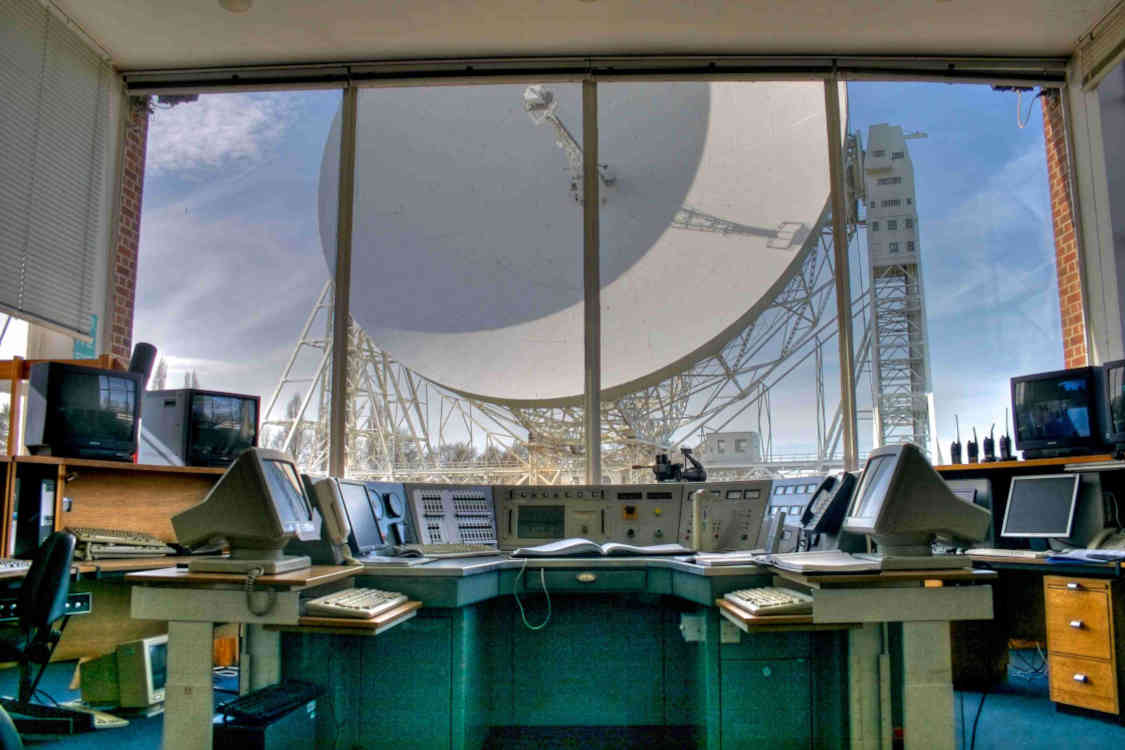
Ideas 16-1 Space Research
Chances of life on exoplanets
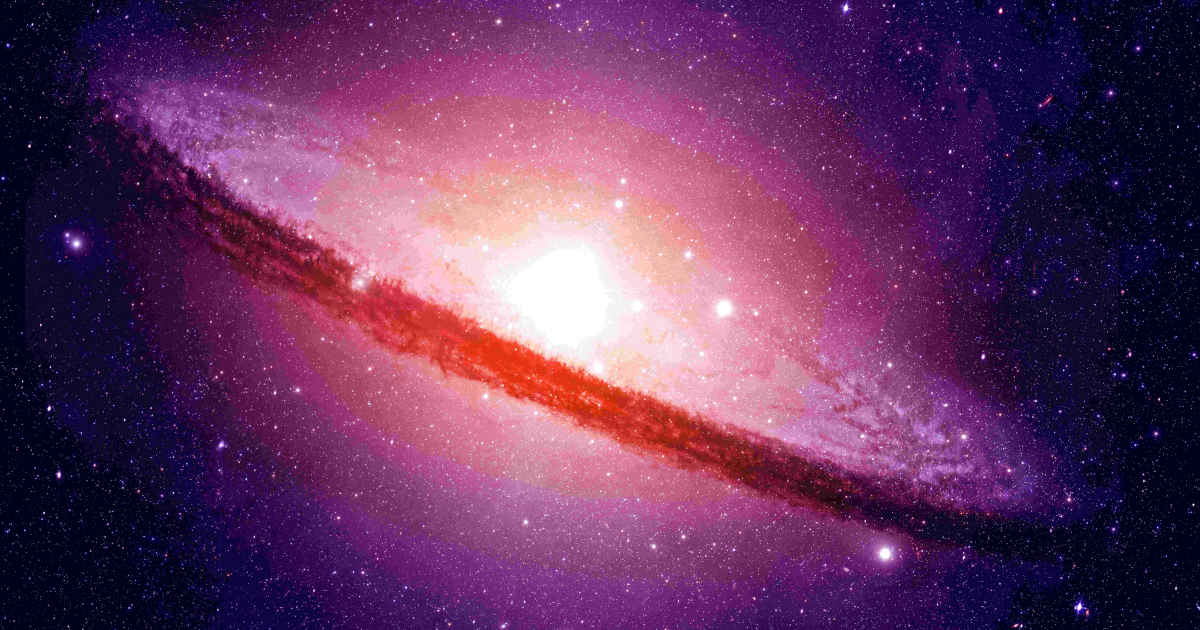
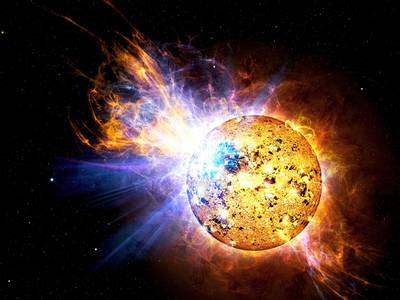
Ideas 16-1 Space Research
Types of Main Sequence Star
Types of Main Sequence Star |
||
|---|---|---|
| Star Spectral Type | Population Percentage | Estimated Life Span |
| O Yellow Dwarf | 0.00003% | 1 million years |
| B Blue-White Dwarf | 0.13% | <100 million years |
| A White Dwarf | 0.6% | 1 billion years |
| F Yellow-White Dwarf | 3% | 4 billion years |
| G Yellow Dwarf | 7% | 10 billion years |
| K Orange Dwarf | 12% | 18 to 34 billion years |
| M Red Dwarf | 76% | 560 billion to 350 trillion years |
| D Type White Dwarf (dead stars) | not applicable | 10 billion years |
| Brown Dwarf (failed stars) | not applicable | Immediate |
| Neutron Stars & Magnetars | 1% | 10 billion years |
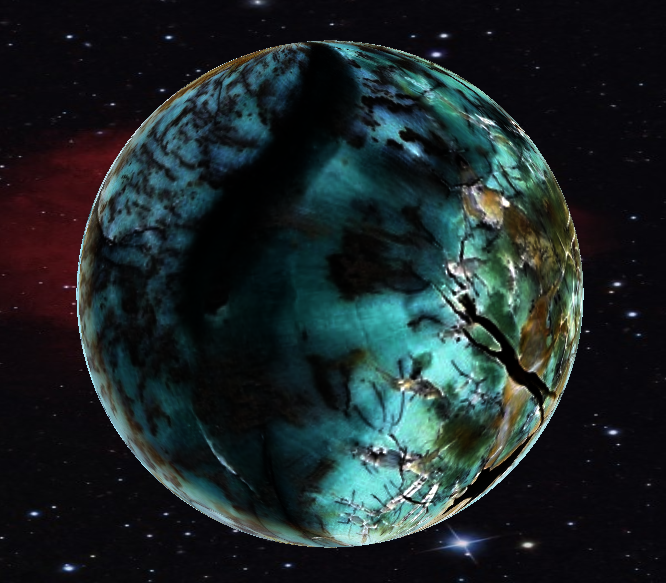
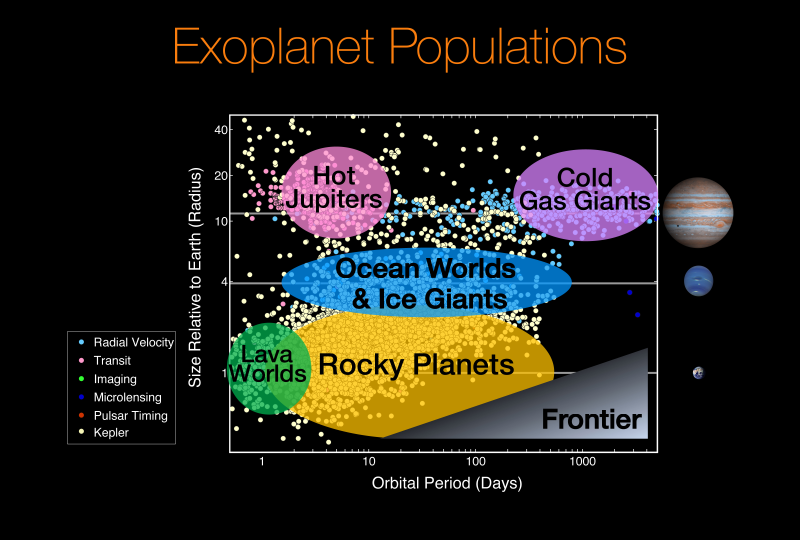
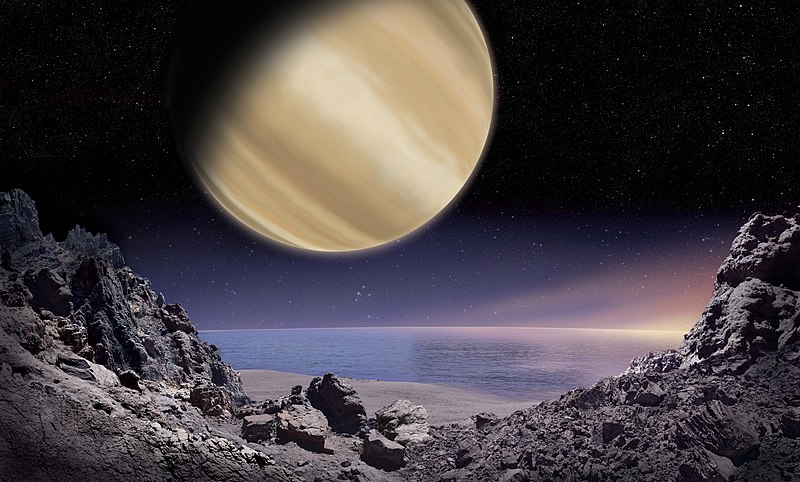
_(weic2308b).jpg)
Ideas 16-1 Space Research
The number of Planetary Systems with Multi-Cellular life
The Number of Planetary Systems |
||
|---|---|---|
| Environmental Parameter | Parameter Value | Number of Planetary Systems (400,000,000,000 stars) |
| n1 stars, probably not binary nor triple, in the galaxy safe zone | 0.50 | 200,000,000,000 |
| n2 stars like our Sun (G, F, K) | 0.08 | 16,000,000,000 |
| n3 planet must be in the habitable zone | 0.25 | 4,000,000,000 |
| n4 planet must be size of Earth, not too big, not too small | 0.20 | 800,000,000 |
| n5 planet must have large outer planets to form a planetary shield.... | 0.50 | 400,000,000 |
| n6 planet must have tidal heating | 0.05 | 20,000,000 |
| n7 planet must have sufficient volatiles to create life | 0.10 | 2,000,000 |
| n8 planet's land and sea scape must promote bio-diversity | 0.10 | 200,000 |
| n9 amino acids and blood rain came from space, essential for single cell life | 0.10 | 20,000 |
| n10 multi-cellular life | 0.10 | 2,000 |
| n11 air pollution emitted by an intelligent civilisation | 0.01 | 20 |
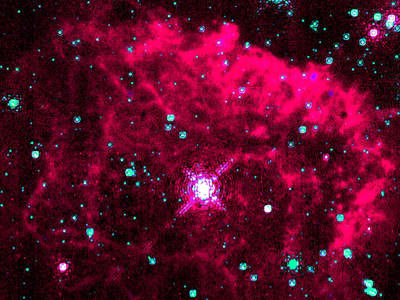
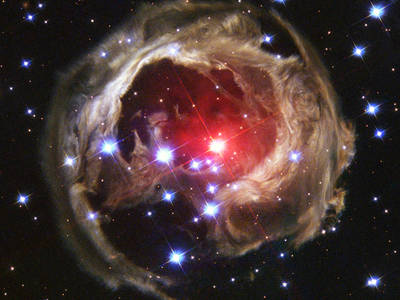
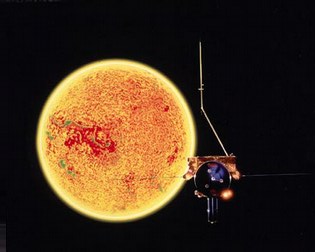
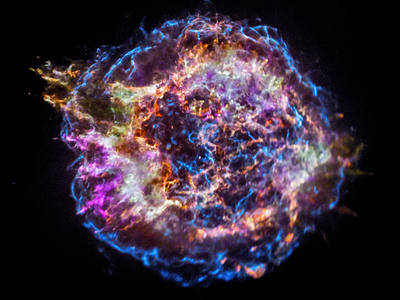
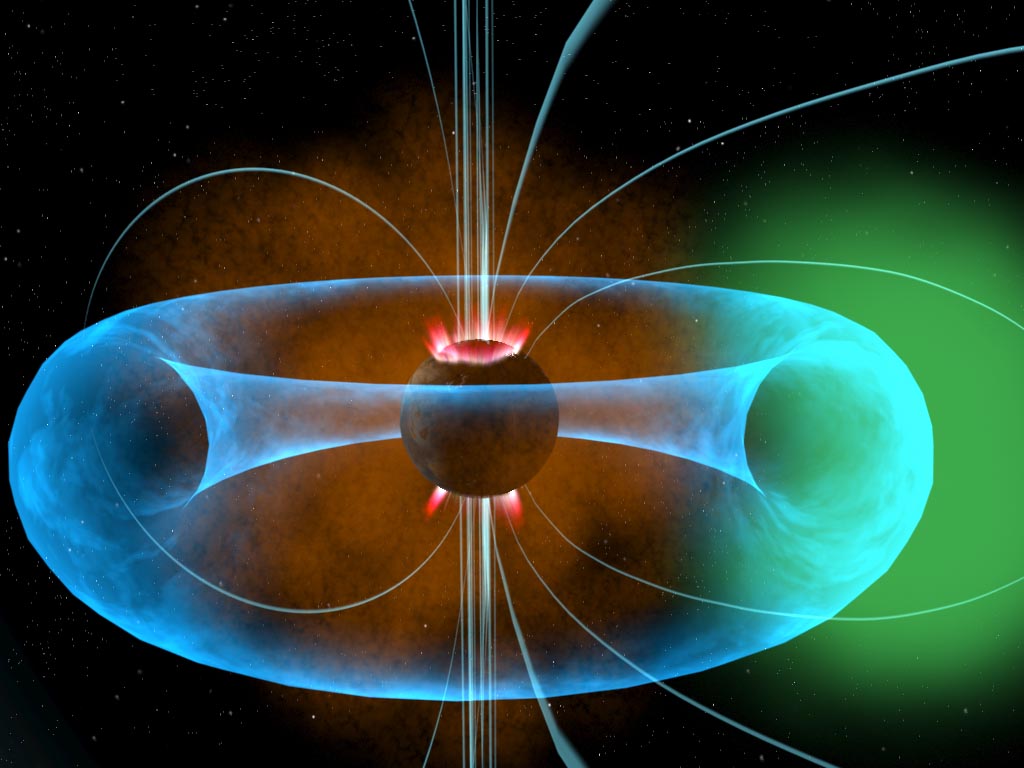
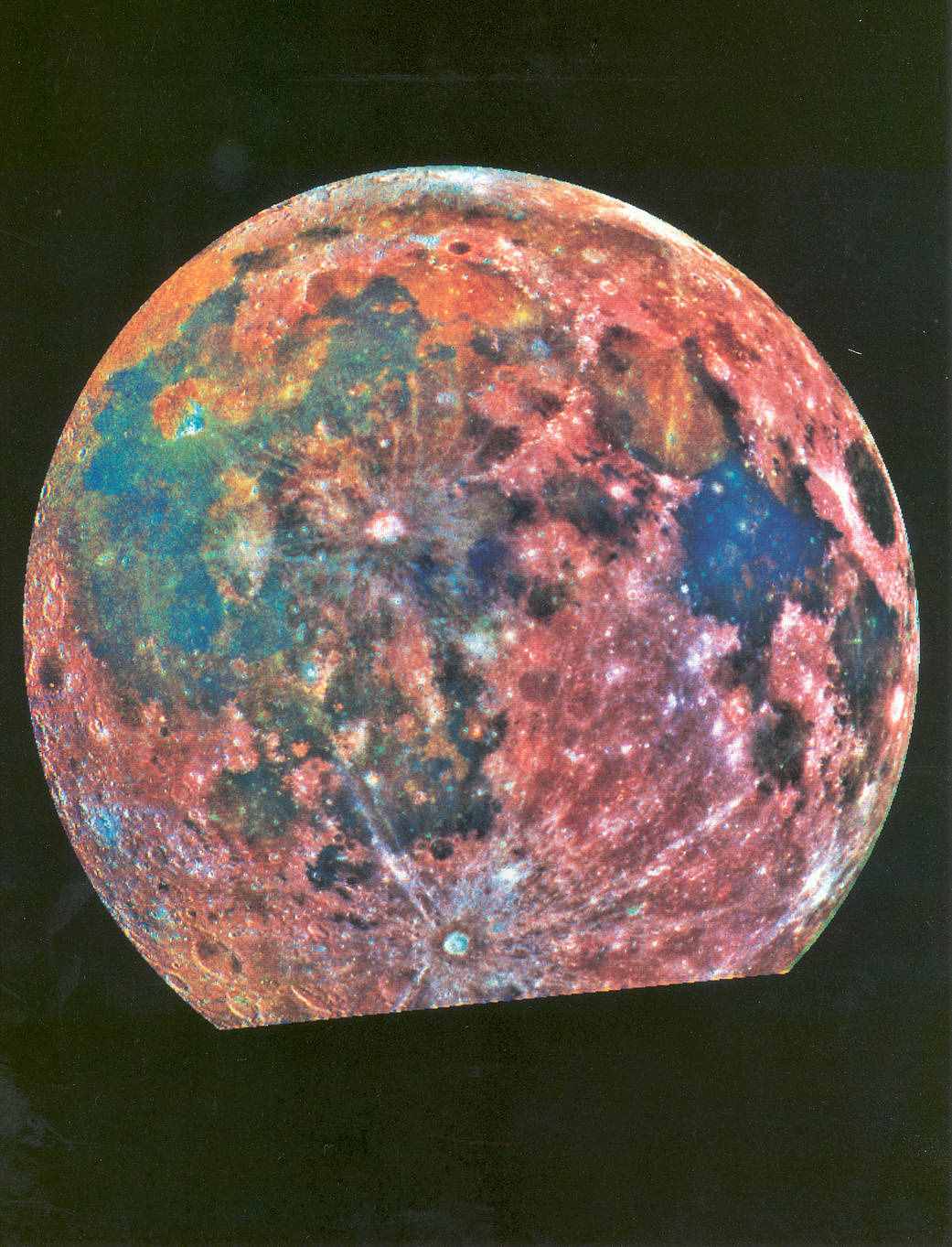
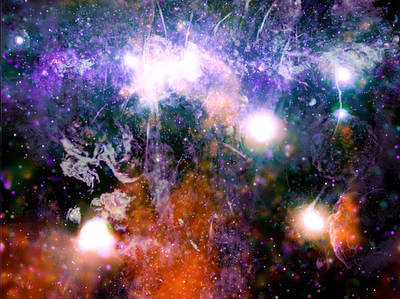
Ideas 16-1 Space Research
Extinction Level Events for Planet Earth (ELE)
Extinction Level Events for Planet Earth (ELE) |
|||
|---|---|---|---|
| Date: millions of years ago | Geological Period Ends | Impact on Life | Evidence |
| 4,500 to 2,500mya | Archeon |
Extensive volcanism and primitive atmosphere of methane and nitrogen. | 4,540mya Planet Earth formed. 3,800mya Oldest single cell cyanobacteria (blue-green algae) found in Greenland. 2,500mya Oldest single cell fungi found. 2,100mya Atmosphere clears to enable photosynthesis. |
| 2,300mya | Paleoproterozoic era |
Oxygen Catastrophe caused by a prokaryotic organism, called cyanobacteria which employed photosynthesis to produce oxygen, which was toxic to most life. | 2,100mya Atmosphere clears to enable
photosynthesis. 2,500mya Oldest single cell fungi found. 1,600mya Oldest single cell plants found. Protosterol Biota, from the family of organisms called eukaryotes, which lived in the ocean, feeding off bacteria, from 1,600 mya to 800mya approx. |
| 900 to 630 mya | Proterozoic to Cryogenian | Earth was covered in glaciers, except hot spots, caused by life
extracting CO2 from atmosphere. 630mya extensive volcanic eruptions occur, lasting just a few years, during which atmospheric temperature swings from -50C to +50C, restoring carbon dioxide to atmosphere. |
890mya fossils of possibly keratosan sponges found at Little Dal Group, Mackenzie
Mountains, NW Canada. They were supported by oxygen from local cyanobacteria.
Before 800mya oxygen content in Earth's atmosphere was only 1/100 of today's. 750mya first confirmed multi-cellular life began. (Australia/Namibia) 508mya Cambrian explosion of life by cellular differentiation, absorbing CO2 and producing oxygen. Found at Burgess Shale, British Columbia, Canada. |
| 513 to 509 mya | Cambrian | Multi-cellular life emerged. End-Botomian 83% of life wiped out. | |
| 450 to 440 mya | Ordovician-Silurian | 57% of species became extinct, including 87% in the seas, mainly in shallow waters. | Glaciation over Gondwanaland, causing drop in sea level, with dead sea life resulting in decreased oxygen levels in the seas. |
| 420 mya | Silurian | Lau/Kozlowskii extinction resulting in 23% of marine species extinct | Possibly cause by volcanic activity resulting in decreased oxygen levels in the seas. Research into evidence of possible 520 km diameter impact crater, known as the Deniliquin structure, in southern New South Wales, Australia is on going. |
| 364 mya | Devonian | 57% of genera & 22% of marine species became extinct. | The runaway growth of plant life, in particular the 24 m tall fern tree Archaeopteris, which took over the world with its extensive root system, mopping up carbon dioxide, thereby resulted in lower atmospheric temperatures. These trees were difficult for fungus to decompose, resulting in the first coal deposits. Ice caps formed, resulting in glaciation over Gondwanaland, thereby reducing sea levels which destroyed coral reefs. These events occurred over a 10 million year period. Dead plants washed into the oceans, caused loss of marine life, caused by lack of oxygen in the polluted seas. |
| 307 mya | Carboniferous | Carboniferous forests wiped out due to climate change. | Climate became much drier due to formation of mountain ranges, when the Laurussian and Gondwanaland land masses formed Pangea. Carbon recycling commenced at plate tectonic subduction zones. |
| 252 mya | Permian-Triassic | 96% of marine species became extinct, including all trilobites, whilst 70% of land vertebrates died out. Event known as the great dying or PT event. Asteroid impact sent shock waves around the globe resulting in the crust parting causing magma chambers to form beneath salt deposits from dried up lakes, and under hydrocarbon deposits (crude oil, coal and frozen methane). The heat produced the halogen gases bromine and chlorine, which destroyed the ozone layer resulting in high ultra violet radiation that sterilized plants by causing their seeds to mutate. The burning hydrocarbons created an abundance of carbon dioxide that triggered global warming. Atmospheric temperatures rose to 60 C, whilst sea temperatures rose to 14 Celsius. Plant life died, whilst high temperatures resulted in heavy rains causing run off which polluted the seas. Ocean acidification, due to CO2 in atmosphere also contributed to dying in seas. Ice caps melted causing ocean conveyor to stop, resulting in lack of oxygen to support sea life. Rotting fish produced toxic waters giving off hydrogen sulphide which killed off any surviving land animals. Pangaea became a desert, whilst heavy rains last 2 million years. Surviving animals live underground. An estimated one million cubic miles of magma erupted during this series of events. | 482km diameter crater discovered by NASA GRACE satellite in Wilkes land, Antarctica. Impact resulted in 200,000 years of volcanic eruptions known as the Siberian traps. Caused Gondwanaland to break up, creating Pangaea. Nickel deposits in Siberia, reacting with killer microbes are thought to have created methane. Carbon dioxide levels rose to 2,500 parts per million during this event, causing temperatures to rise from 21C to 38C. CO2 levels eventually fell to 280 ppm pre-industrial. Today the CO2 level is 420 ppm. |
| 201 mya | Triassic-Jurassic | 23% families, 48% genera, 75% of all species became extinct. Most amphibians extinct. Dinosaurs become dominant. | Global volcanic events, shortly before Pangaea breaks up. Causes global warming and acidification of oceans. Currently no related asteroid impact has been found. |
| 84 mya | Cretaceous | No details, but the resulting climate change would have been catastrophic for most living species, if it had happened suddenly. | Earth tilted on its axis 12 degrees. It then tilted back to its original tilt over a period of 5 million years. Evidence found in magnetite in sedimentary limestone in Apennine Mountains, Italy. Charcoal deposits are evidence of burning trees on Ross Island, Antarctica 84 to 72 mya, probably due to volcanic activity. Cause of Earth's tilt is unknown, but it may have been due to flooding/drying up of Black Sea, Mediterranean Sea, Gulf of Mexico or similar. |
| 66 mya | Cretaceous-Paleogene | 50% to 75% of species became extinct, including dinosaurs. The global winter lasted about seven years, whilst it took five million years for species to recover. | Asteroid impact Yucatan peninsula, Mexico. Causes volcanic eruptions at Deccan traps, India |
| 56 mya | Paleocene-Eocene Thermal Maximum (PETM) or Eocene Thermal Maximum 1 (ETM1) | A rise of 5 to 8C globally caused by a release of carbon dioxide lasting at least 20,000 years resulting in global warming lasting 200,000 years. Arctic temperature rose to 23C | The cause of this event is unknown. Possibly due to volcanism or release of frozen methane hydrates and carbon dioxide stored under pressure in the seas and oceans of the world. Caused considerable loss of deep sea marine life especially 30 to 50% of benthic foraminifera (single celled organisms). |
| 34 mya | Eocene-Oligocene | 66% of species became extinct. | Global cooling, possibly due to reduction of the greenhouse gas carbon dioxide in the atmosphere, possibly as wind climbed over new mountain ranges that absorb CO2. Others postulate that it was caused by azolla floating fern in Arctic waters, plus photosynthesis. Lower temperatures led to reduction in ocean current flow, known as the global conveyor. |
| 2.6 mya | Pliocene-Pleistocene | 36% of marine genra became extinct. Homo Habilis became extinct 1.4 mya |
Global temperatures fell, possibly caused by supernova exploding or simply climate change. Polar ice caps formed, as did glaciers. |
| 1,250,000 to 700,000 years ago. | mid-Pleistocene |
For 100,000 years there were only 1,300 Homo Sapiens. A genetic study indicates that Homo heidelbergensis died out 200,000 years ago. It was the forerunner of Denisovans, Neanderthals and Homo Sapiens, and was little more than 1,000 in number, at any one time. The planets largest hominid, gigantopithecus blacki, died out in south-east Asia between 295,000 and 215,000 years ago, due to environmental change, whilst Homo Naledi died out 236,000 years ago. | Global temperatures fell, possibly caused by supernova exploding or simply climate change. Polar ice caps formed, as did glaciers. Our early human ancestors likely lived underground to keep warm. Humans first managed fire in caves in Israel during this period. |
| 450,000 years ago | mid-Pleistocene epoch | An ice sheet extended across the northern North Sea, into which the rivers Rhine, Thames, etc. flowed. Eventually the lake (North Sea) overflowed the weald in southern England, cutting through the chalk deposits. The high velocity of this water created the white cliffs bounding the Straits of Dover. This incident separated the British Isles from the continent of Europe. | Sonar evidence in English Channel indicates deep scouring of sea bed caused by abundant flow of water in one direction. |
| 84,000 to 65,000 years ago | Upper Paleolithic era (old stone age) Pleistocene Epoch |
Homo Erectus became extinct 117,000 years ago approximately. Whether it was caused by the climate, disease or other factors is unknown. It's possible that the last straw came when the Toba volcano in Sumatra, Indonesia exploded, creating a global winter lasting up to 10 years. It was the largest explosion in the last 2 million years, 74,000 years ago. Ghost archaic human extinct (West Africa). | Humans first left Africa during the inter-glacial period 84,000 years ago via grasslands in Sinai, rivers in what are now dried up wadis in Jordan rift valley and Levant, according to the discovery and dating of flint tools. Once the ice caps enlarged, causing sea levels in the Red Sea to fall, humans migrated east from the horn of Africa to Sinai 246,000 to 65,000 years ago. Evidenced by middens composed of sea shells along African coast. |
| 50,000 years ago | Upper Paleolithic era (old stone age) Pleistocene Epoch |
No evidence of collateral damage. Neanderthals (Europe), Denisovans (Asia), Homo floresiensis (Flores, Indonesia) and Homo Luzonensis (Philippines) became extinct. Probably terminated by Homo Sapiens migrating out of Africa 54,000 to 42,000 years ago. | A meteorite impacted with the Earth in Arizona, USA. It created a crater 1.2km in diameter and 170 metres deep, caused by a 50 metre nickel-iron meteorite. It is the best preserved impact crater on Earth, known as Meteor or Barringer Crater |
| 11,200 years ago by radiocarbon dating 13,000 years ago by dendrochronology dating 12,800 years ago, called the Younger Dryas meteorite impact, at Hiawatha Glacier, Greenland |
Upper Paleolithic era (old stone age) Pleistocene Epoch ancient aliens fire epoch |
Evidence of fern growth. May have wiped out the Magdalenian culture in western Europe. Many archaeological sites around the world, buried under sediment or submerged by rising sea levels, remain to be excavated and recorded, in order to generate a clear picture of events, and how it impacted early civilisation. Rising sea levels caused frequent earthquakes, wiping out civilisations. | A large comet, impacted with the Earth creating global conflagration. Charcoal layer detected in Europe, north America, Russia, Egypt, South Africa, Australia. Called the Usselo Horizon and Clovis Layer, it consists of a charcoal rich layer at 18 metres depth. Some samples containing iridium and nano-diamonds. |
|
20,000 to 10,000 years ago ancient aliens ice epoch |
Upper Paleolithic era (old stone age) |
Ice dam on Clark Fork River breached near end of last ice age. Missoula floods created the Channeled Scablands which is located in the Badlands National Park, Washington state, USA. | No evidence of it affecting human encampments. |
| Neolithic era (New Stone Age) 8,200 years ago lasting 150 years ancient aliens ice epoch |
Holocene Epoch, of the Quaternary Period | Evidence that a sudden and lasting drop in temperature brought farming to an end, causing people to rely on food from the sea. Determined by isotope analysis of teeth. Event caused by global warming which has continued from the end of the last ice age to the present day. Ice caps may have melted resulting in ocean currents terminating. Distribution of mass caused north pole to wander at least twice, determined by alignment of major archeological structures. It may also have been brought to an abrupt end on the last occasion, by global slash and burn agriculture in the Middle East and India. | Melt water, from north America's 2km thick ice cap, entering the north Atlantic Ocean, cutting off the Gulf Stream from Britain and northern Europe. The resulting 0.5 metre rise in sea level caused ice sheets to break up, resulting in swarms of ice bergs periodically flowing across the UK's western approaches, causing temperatures to oscillate as south-westerly winds blew over each swarm. Farming was impossible across western Europe. During this period a landslide originating in Norway, caused a tsunami that hit the east coast of Scotland and wiped out homesteads on what is now Dogger Bank. Known as the Storegga slide, it is the largest natural calamity to hit the UK in recent times. It is thought to have created the British Isles, separating it from the continent of Europe. People at Derinkuyu, Nevsehir Province, Turkiye build extensive underground settlements many storeys deep, in order to keep warm. It is one of several extended over the millennia in the region of Cappadocia. |
| 7,600 years ago | Holocene Epoch, of the Quaternary Period |
Mediterranean Sea rose due to ice cap melting. It eventually overflowed a land bridge at the Bosphorus, cutting a deep channel in the rock as it filled the Black Sea, until then a fresh water lake. | DNA and archaeological evidence exists to show that this incident caused tribes to evacuate the area and migrate across Europe. |
| 4,800 years ago | Holocene Epoch, of the Quaternary Period ancient aliens water epoch |
Possibly 2 asteroids hit the Earth after a large comet made a close encounter with the Sun and broke up. Even today NASA solar satellites observe three mini comet impacts with the Sun per week. Examination of numerous myths indicates that the impact area was in the south western Indian Ocean at a point called Burckle Crater. Shock quartz, micro fossils and rare metals on the ocean floor appear to confirm this, as does the presence of chevron patterns on the coastal regions of south-east Madagascar (Fenambosy) and south-west Australia, created by the three mile high mega-tsunami. The crater on the ocean floor is 29 km in diameter. | Giant tsunamis flooded lowlands and caused continuous rain for nine years according to dendrochronology records. Recorded in the Holy Bible in Genesis (Noah) and Torah from Israel, and Eridu Genesis, from Nippur, and Gilgamesh (Utnapishtim) from Nineveh, Mesopotamia as the 'Great Flood.' Also found in Mayan hieroglyphs on platform of Temple XIX at Palenque. Flood accounts exist at this time in India, Egypt, Greece, etc. The comets must either have been very large, or upon hitting the sea, threw up enormous amounts of water into Earth orbit, or went into elliptical orbits for years before eventually crashing to Earth. Were they sent by aliens hell bent upon erasing our pre-history? The search for impact craters under the ice caps and seas continues. More data maybe obtained by astronauts retrieving regolith cores from the Luna poles. |
| 535 CE | Holocene Epoch, of the Quaternary Period | Volcano Krakatoa in Indonesia, erupted causing a global mega-disaster. Mentioned in Indonesia's Book of Kings. The volcanic ash rose to 30 kilometres height, partially blotting out the Sun for eighteen months. Krakatoa was to erupt again in 1883. there were also major volcanic eruptions in 536CE location unknown, 540 CE Lake Ilopangoand, El Salvador, 546 CE in Iceland, and 547 CE at an unknown location. | Crops failed, starvation, wars and civil unrest, disease and pandemic. Civilisation disintegrated. Temperatures dropped to 2C, whilst it snowed in summer. Ultimately in the year 541 CE, bubonic plague emerged in the Roman empire, later called the Justinian plague. Mentioned by Anglo-Saxon cleric Geldas et all, seen in tree rings (dendrochronology) and recorded in Greenland and Antarctic ice cores. This period of cooling from 536, lasted until 560 CE. It is likely that at least one third of the human population of this planet died out. |
| 934 CE | Holocene Epoch, of the Quaternary Period | Volcano Eldgja in Iceland is an 75km long fissure. The eruption created a 780km lava field. It was the biggest basaltic lava eruption ever. | The release of sulphur dioxide resulted in a drop in atmospheric temperature globally for years, resulting in extensive crop failure. |
| 1783 CE | Holocene Epoch, of the Quaternary Period | Volcano Laki in Iceland is an 75km long fissure. The eruption created a 15km lava field, being the second largest in this millennium. | 50 to 80% of Iceland's farm animals and 25% of human population killed. The release of sulphur dioxide resulted in a drop in atmospheric temperature globally for years, resulting in extensive crop failure. |
| Numerous solar, outer core or interstellar events, presumably over eons | A threat now (a chance of 1% in the next 10 years) | Miyake events recorded by dendrochronology. At least 6 events detected in the years 7176BCE, 5410BCE, 5259BCE, 66BCE, 774CE and 993CE. Signatures of Carbon 14, exist of possibly similar events at other times. | Possibly mentioned in the Anglo-Saxon Chronicles, which related to the dark ages. Similar to electromagnetic pulse generated by large nuclear warheads, these events probably originate from the Sun, but are at least ten times more powerful than the Carrington event of 1859 that set telegraph poles ablaze, destroyed transformers and other electrical equipment and produced auroras. Miyake events can last for more than one year. The Sun is considered to be a malevolent beast compared to type M red dwarf stars which are far more numerous. This evidence therefore implies that such events would kill off any chance of extraterrestrials originating from those solar systems. It would take years for the human race to recover from such an event. It is likely that it would not recover, as without a world technocracy, our fractured civilisation would more than likely return to a world of global conflict. Miyake events destroy electrical and electronic systems, including those in weapons, especially in the west. Such an event could create an imbalance of power, with the other side relying upon mechanical weapon systems, WWII era, and large numbers of troops. |
| Numerous earthquakes happen each day somewhere on Earth | Constant event |
2004 Indian Ocean Boxing Day Earthquake & Tsunami 220,000 dead, cost US$10 billion 2011 Japan Magnitude 9 Earthquake & Tsunami 18,500 dead, cost US$220 billion 2020 Sudan/Red Sea Afar Triple Junction East African Fault System 2023 SE Turkiye and NW Syria along the East Anatolian Fault Line. At least 60,000 dead. |
Whilst most threats to our civilisation originate from space, and are infrequent, earthquakes and volcanic eruptions are an everyday occurrence on many parts of the Earth's surface, leaving little evidence of the event. As the Earth cools over eons, they become less frequent, but they cannot be predicted, and neither can we be certain that the last big one has come and gone. |
| Present Day | Holocene Extinction (Anthropocene extinction) ancient aliens modern man epoch | Rapid loss of numerous species brought on by the need for countries to modernize to western standards, resulting in natural habitats being demolished to make way for housing estates, industrial estates, hydro-electric schemes, drained marshland and felled forest for intensive mono culture farming, highways, railways, airports and harbours. The rate increases to match the needs of a growing human population, whilst dependency upon the world economy results in the import of foreign species, as stowaways on ships, or as released or escaped pets, which often wipe out indigenous life. Irresponsible excessive use of fertilizers and pesticides results in further loss of species, whilst continuing use of fossil fuel burning power stations increases carbon dioxide levels in the Earth's atmosphere resulting in extreme weather conditions, which many species are unable to adapt swiftly to, resulting in extinction. Increasing atmospheric and ocean temperatures results in the melting of methane hydrates at the edge of continental shelves and the melting of the perma frost in northern latitudes. Just where the irreversible tripping point lies, beyond which our ice caps melt completely, leading to a Venus like atmosphere, no one knows. | Enabled by capitalism, money, apathy, incompetence and greed, resulting in many politicians putting the needs of themselves before the needs of the masses. Economic parameters appear to be more important than limiting extremes of weather and pollution. |
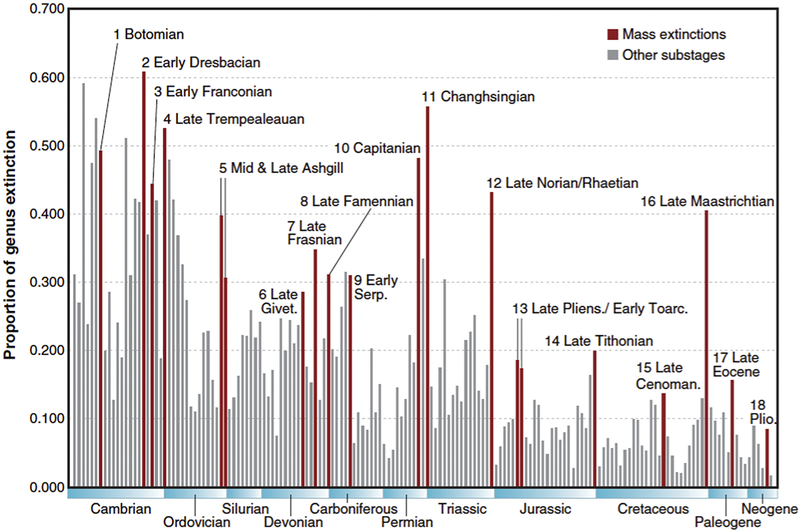
Major Geological Events
